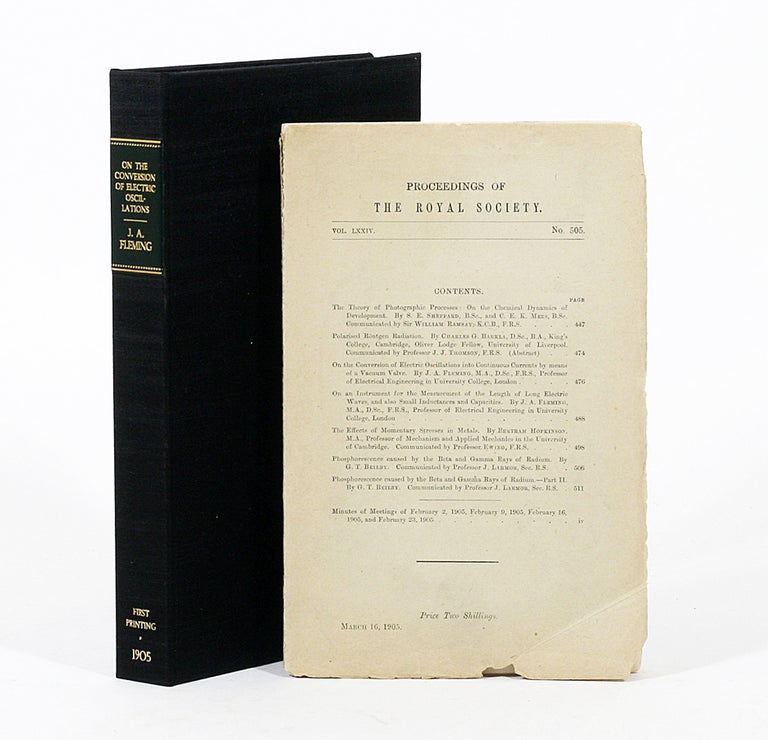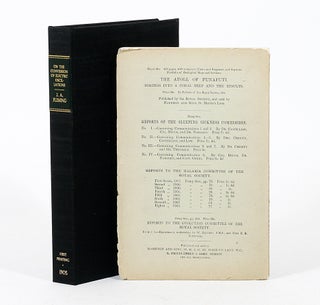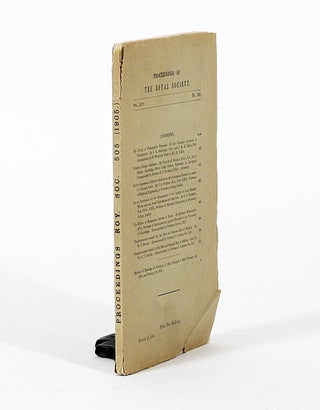On the Conversion of Electric Oscillations into Continuous Currents by Means of a Vacuum Valve
“An ideal and perfect rectifier for electric oscillations may, therefore, be found by enclosing a hot carbon filament and a perfectly cold metal anode in a very perfect vacuum.”
FIRST EDITION IN ORIGINAL WRAPPERS of one of the seminal discoveries of the twentieth-century: the invention of the “Fleming Valve”, or vacuum tube, often cited as the beginning of the field of electronics. PMM 396.
In 1884, Thomas Edison had demonstrated that “if a metal plate is sealed into an electric light bulb and joined to the positive end of the filament a considerable current will pass. If the plate is joined to the negative terminal, however, no current will pass. This was known as the ‘Edison effect’ and in 1890 Fleming, an electrical engineer who had worked with the Edison company in London and was now a Professor at University College, began a careful study of this phenomenon in carbon filament lamps. In 1904 he was able to demonstrate that this occurred not only with electric waves but also with wireless waves. He thus introduced the basic principle of the modern wireless valve, which permits only unilateral conductivity. The immense superiority of the Fleming thermionic valve [in the United States, named the vacuum tube] to all previous detectors of wireless waves caused it to be widely used as an efficient and reliable detector” (Printing and the Mind of Man, 396). Several years later, the American inventor Lee DeForest modified Fleming’s “diode” vacuum tube, adding a third electrode. Fleming’s valve, with DeForest’s improvement, would not only result in great advances in broadcasting and wireless communication, but would dominate electronics in general for the next half-century before being replaced by the transistor.
Also includes another article by Fleming, “On an Instrument for the Measurement of the Length of Long Electric Waves, and also Small Inductances and Capacities.”
IN: Proceedings of the Royal Society, Vol. LXXIV, No. 505, pp. 476- 487; March 16, 1905. London: The Royal Society, 1905. Octavo, original printed wrappers, unopened; custom silk box. Small chip and crease to bottom corner of front wrapper, a little wear to spine ends. With rare Index slip and list of papers read laid-in. RARE IN ORIGINAL WRAPPERS.
Price: $4,300 .




